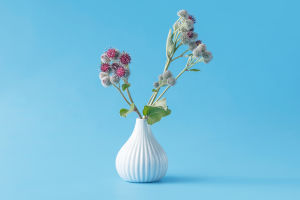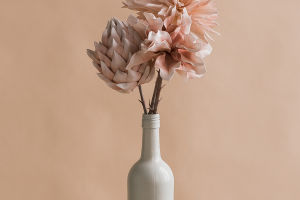Flower arrangement art is a unique and expressive form of art, with various styles and cultural backgrounds endowing it with distinct characteristics and aesthetics.
Below, we will introduce the main styles of flower arrangement art and explore their differences in design concepts, material usage, and overall styles.
1. Western Style
Western flower arrangement art originated in ancient Greece and Rome and has evolved. Its main characteristics are reflected in several aspects:
- Symmetry and Balance: Western flower arrangements often pursue symmetry and balance, emphasizing the coordination of shapes and colors. Designers typically arrange materials geometrically, creating a sense of harmonious beauty throughout the work.
- Diversity of Materials: The Western style frequently employs a variety of materials, including flowers, leaves, fruits, and other decorations, enriching the layers and visual effects of the arrangements.
- Symbolic Meanings: Many Western floral works carry symbolic meanings; for instance, white roses symbolize purity, while red roses represent love. Designers often choose appropriate materials based on themes to convey specific emotions or messages.
- Decorative Style: In terms of decorative style, Western flower arrangement art emphasizes individuality, with florists creating works tailored to the client’s needs and occasions, showcasing their personal style.
2. Japanese Style (Ikebana)
Japan’s flower arrangement art, known as Ikebana, has profound cultural roots and philosophical significance. Its main characteristics include:
- Simplicity and Elegance: Ikebana emphasizes simplicity and elegance, typically using a minimal number of materials. The careful arrangement creates graceful lines and a sense of space, conveying an atmosphere of tranquility and introspection.
- Beauty of Nature: This art form focuses on the expression of nature, often highlighting the natural forms of plants and seasonal changes, allowing each piece to showcase the beauty of the natural world.
- Use of Space: Ikebana pays great attention to the use of space, often integrating flowers with vases and the surrounding environment to form a harmonious overall effect.
- Symbolism: Japanese flower arrangement art is often rich in symbolism, utilizing elements that reflect the harmony between man and nature, commonly including the three elements of earth, heaven, and humanity.
3. Dutch Style
Dutch flower arrangement art is renowned for its opulence and vibrant colors, characterized by:
- Rich Colors: Dutch arrangements often employ bright color combinations to attract viewers’ attention, reflecting a lively and vibrant feel. Designers consider both contrast and harmony in their choice of materials.
- Creativity and Experimentation: Dutch florists frequently break traditional boundaries through experimentation and innovation, incorporating unconventional materials and structures, such as vegetables, fruits, and even plastic items, to create unique visual effects.
- Free Form: This style emphasizes free design forms, often breaking the rules of symmetry and balance in pursuit of more expressive and individualized designs.
- Fashion Elements: Dutch flower arrangement art is closely linked to fashion trends and is often influenced by modern art, creating arrangements that exude a contemporary flair.
4. English Style
English flower arrangement art is known for its rich traditions and elegant style, featuring characteristics such as:
- Material Selection: English arrangements commonly use locally grown flowers, such as roses, lilies, and lilacs, to reflect the beauty of nature and local characteristics.
- Clear Layers: This style emphasizes a sense of layering, arranging flowers of varying heights to create rich visual effects and a sense of space.
- Combination of Natural and Artificial Elements: English flower arrangement art often blends natural elements with artificial decorations, forming a unique artistic style that showcases the harmonious coexistence of nature and human creativity.
Whether it is the symmetry and balance of Western arrangements, the simplicity and philosophical depth of Japanese Ikebana, or the opulence and freedom of Dutch styles, each of these forms showcases the diversity and richness of flower arrangement art. Viewers not only appreciate the beauty but also sense the profound cultural heritage and artistic charm behind each style.


